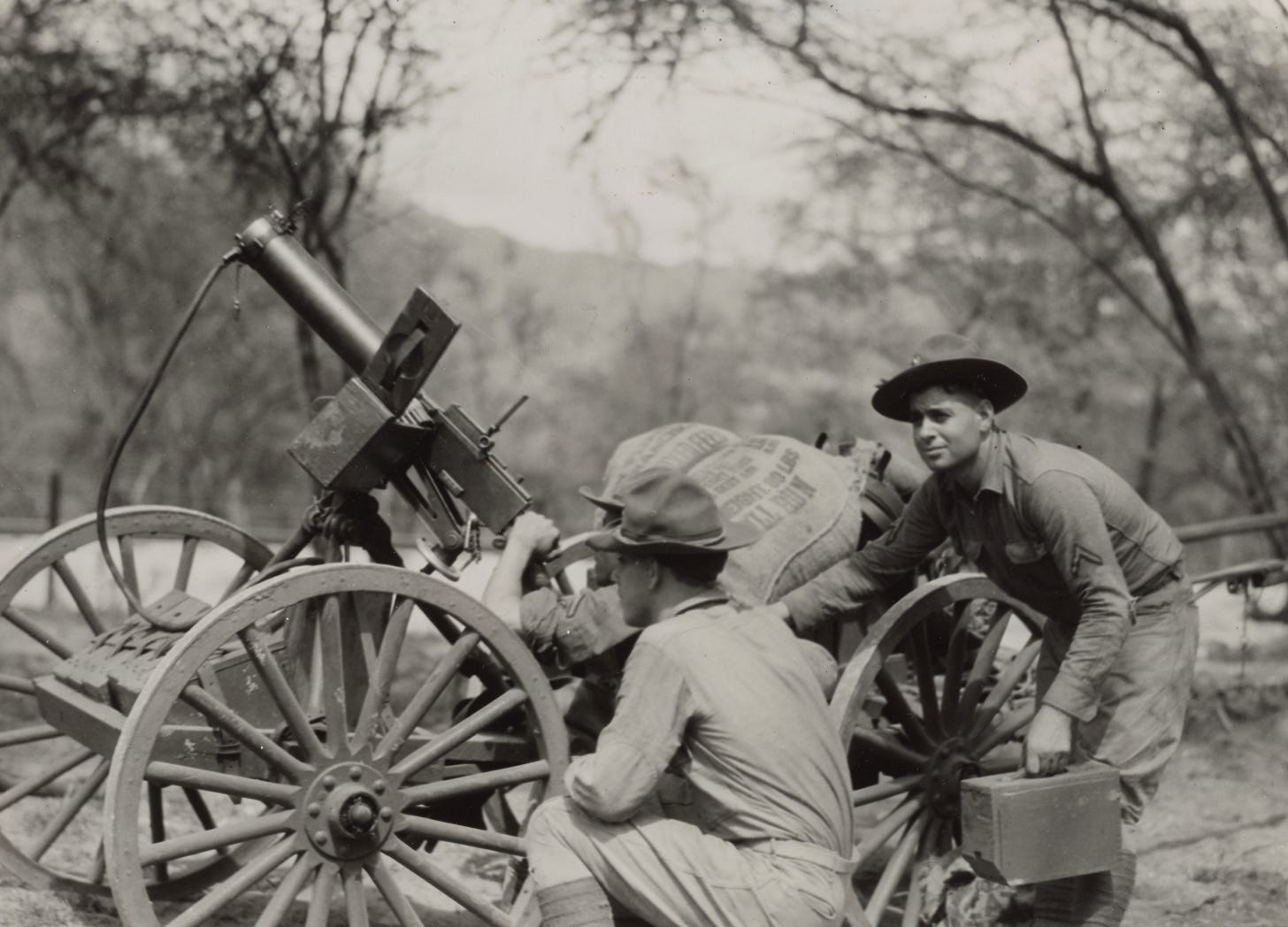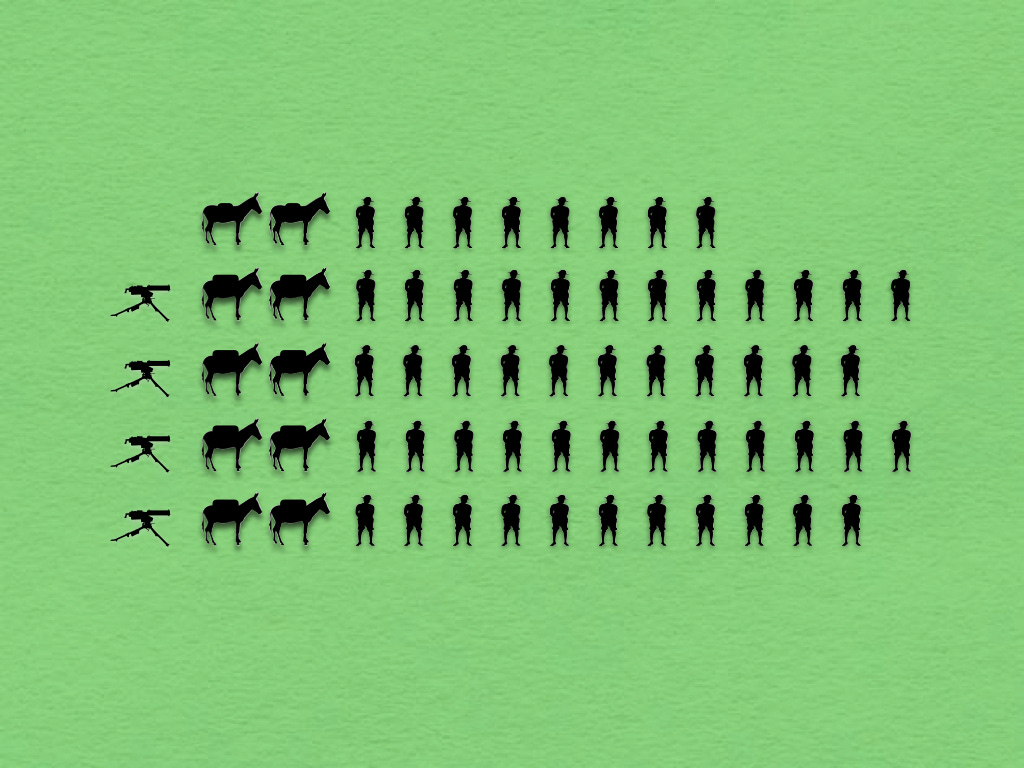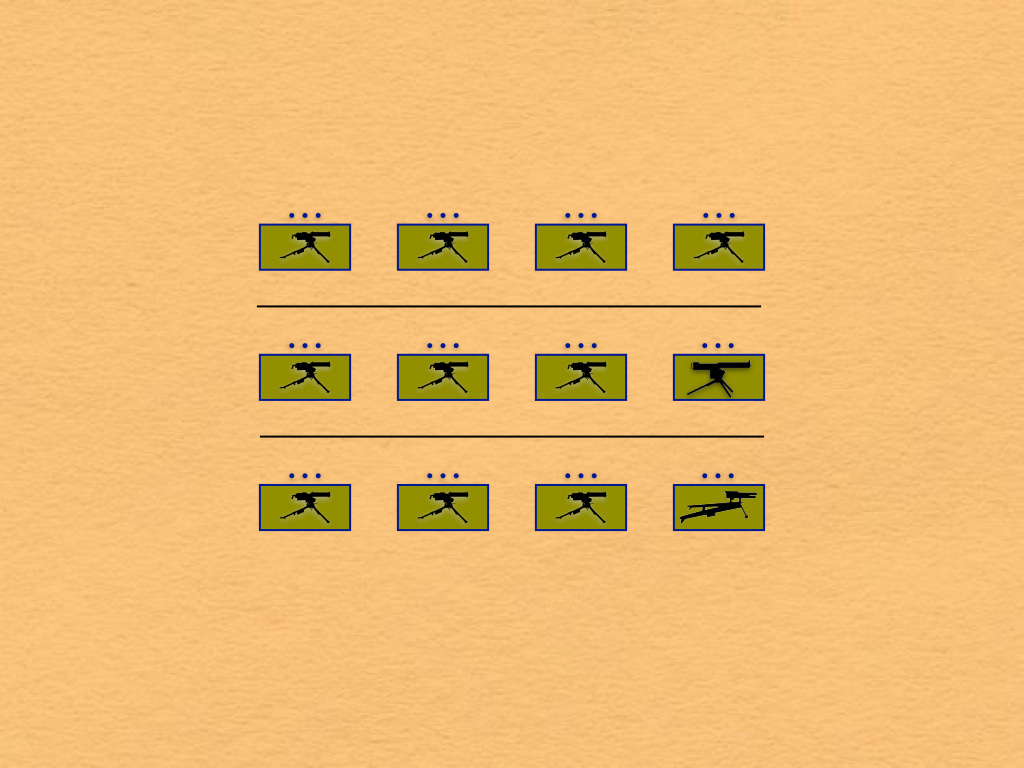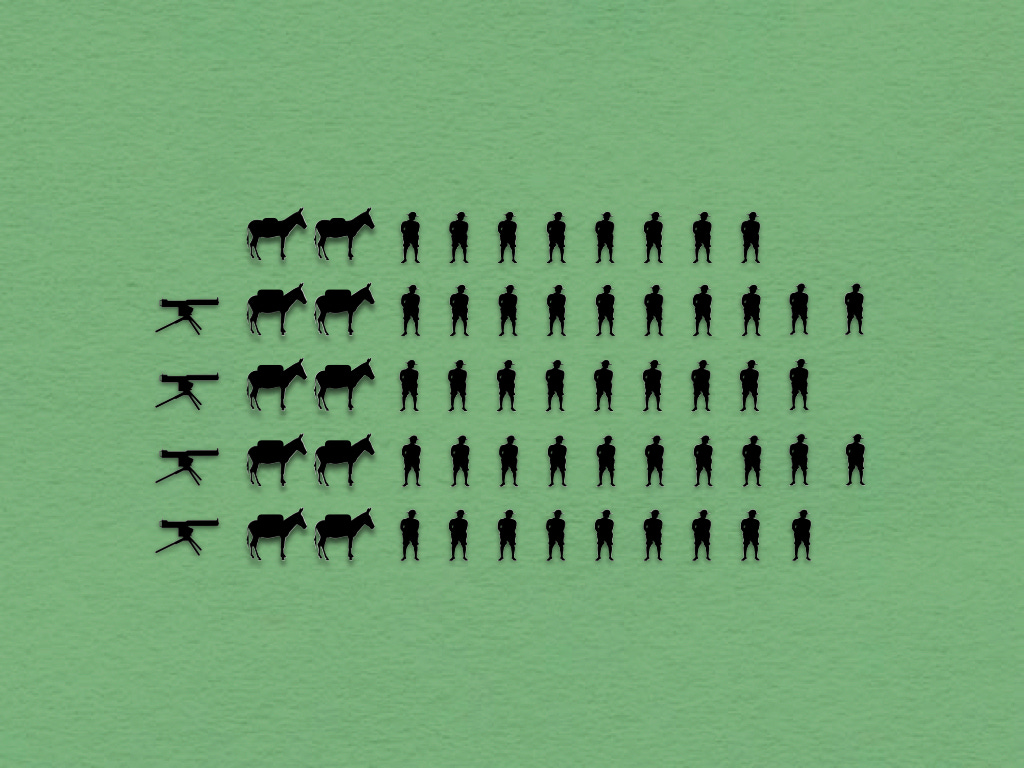Experimental Machine Gun Companies (1929)
Battalion: An Organizational Study of United States Infantry
The estate of the late John Sayen has graciously given the Tactical Notebook permission to serialize his study of the organizational evolution of American infantry battalions. The author’s preface and the previous section of this book may be found via the following links:
Lieutenant Colonel Sayen died before he was able to put the finishing touches on his book. Thus, from time to time, I will punctuate the presentation of the original text with a short article that fills in some of the gaps in the manuscript. This post, for example, provides material that connects the sections on experimental companies and experimental battalions
While some of the rifle companies of the 29th Infantry tested various ways to distribute BARs, the machinegun companies of that regiment experimented with two new structures. This new organizations replaced three relatively large platoons, each of which operated four M1917 .30 caliber machine guns, with four somewhat smaller platoons.
Like all of the standard machine gun platoons of the day, three of the new platoons in each experimental machine gun company were armed with four of the aforementioned .30 caliber weapons. The companies differed, however, when it came to the armament of the fourth platoon. In one company, the fourth platoon was armed with M1921 .50 caliber machine guns. In another, it was a howitzer platoon borrowed from the regimental howitzer company. (Like other howitzer platoons of the day, it was armed with two 37mm infantry guns and two 75mm mortars.)
All three types of machine gun platoons were “binary” organizations. That is, each platoon consisted of a headquarters (composed of one officer, three non-commissioned officers, and four or five privates) and two sections. Each section, which was led by a sergeant, consisted of two squads, each of which was devoted to the movement, feeding, and employment of a single machine gun.
According to the tables of organization adopted in 1927, each machine gun squad consisted of eleven men and two pack mules. In the experiment, however, the number of men in each .30 caliber squad was reduced to eight, while the strength of each .50 caliber squad was set at nine. This replaced three fifty-four men platoons with three forty-two man platoons and one forty-six man platoon.
In there were twenty-six soldiers in the company headquarters in both the standard machine gun company of 1927 and the experimental machine gun company of 1929. Thus, while the company described in the 1927 tables of organization was authorized 188 officers and men, the experimental company of 1929 mustered 198.
Source: Progress reports on experiments conducted at Fort Benning were published in the Infantry Journal in 1929 and 1930.
Editor’s Note: The format of the many appendices to this work fit poorly with Substack. For that reason, I have placed them on a PDF file that can be found at Military Learning Library, a website that I maintain.






